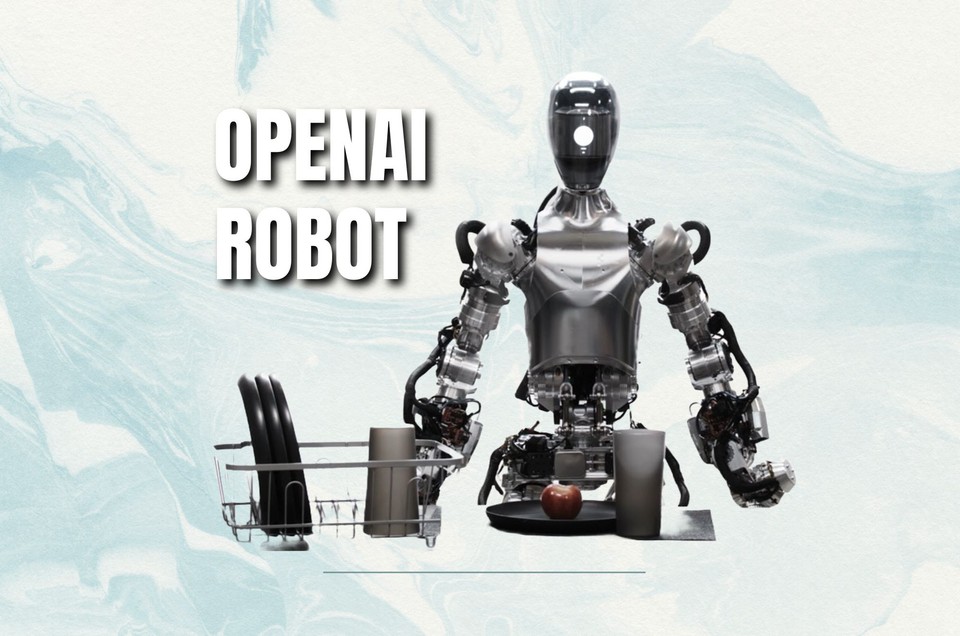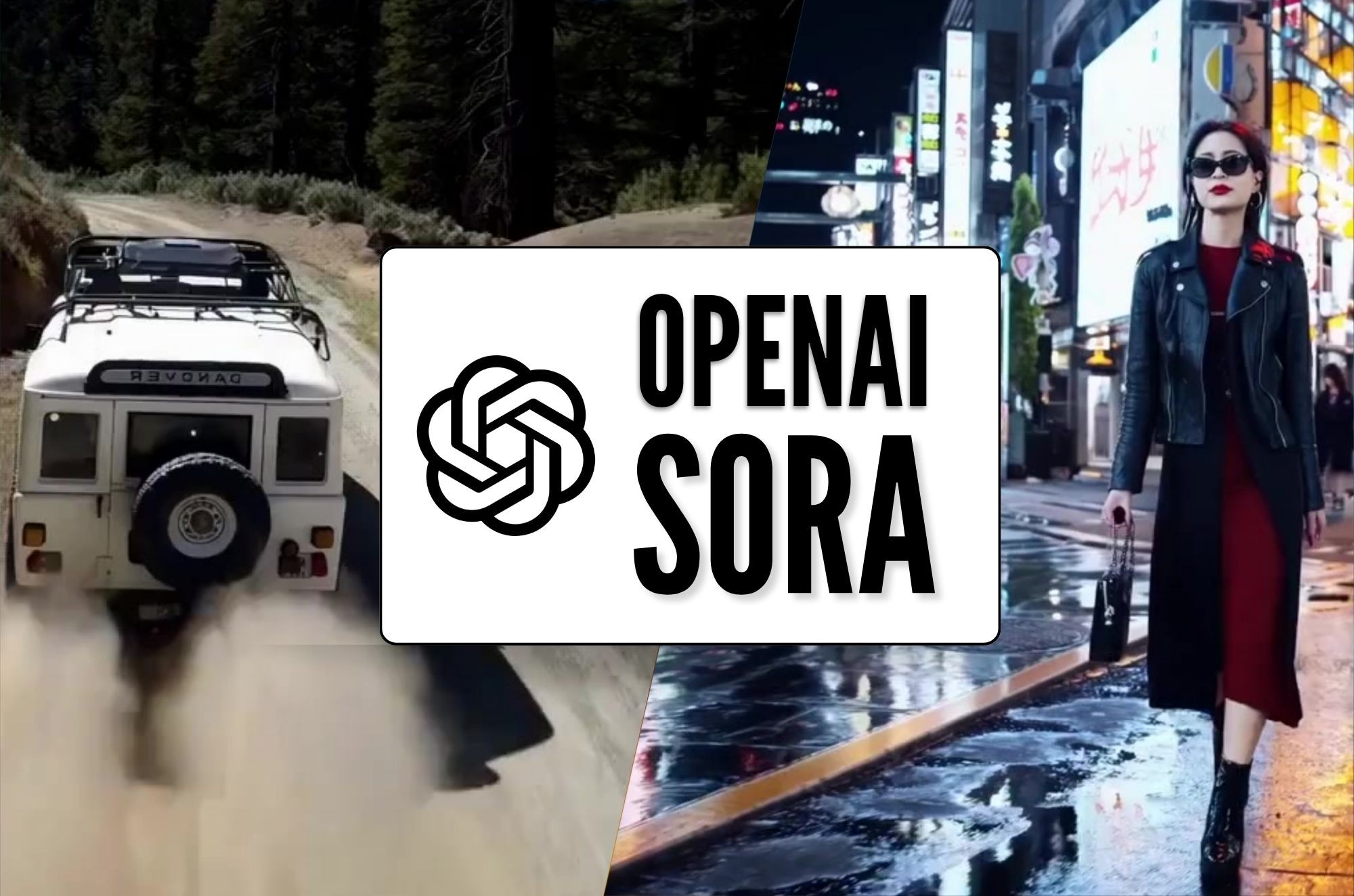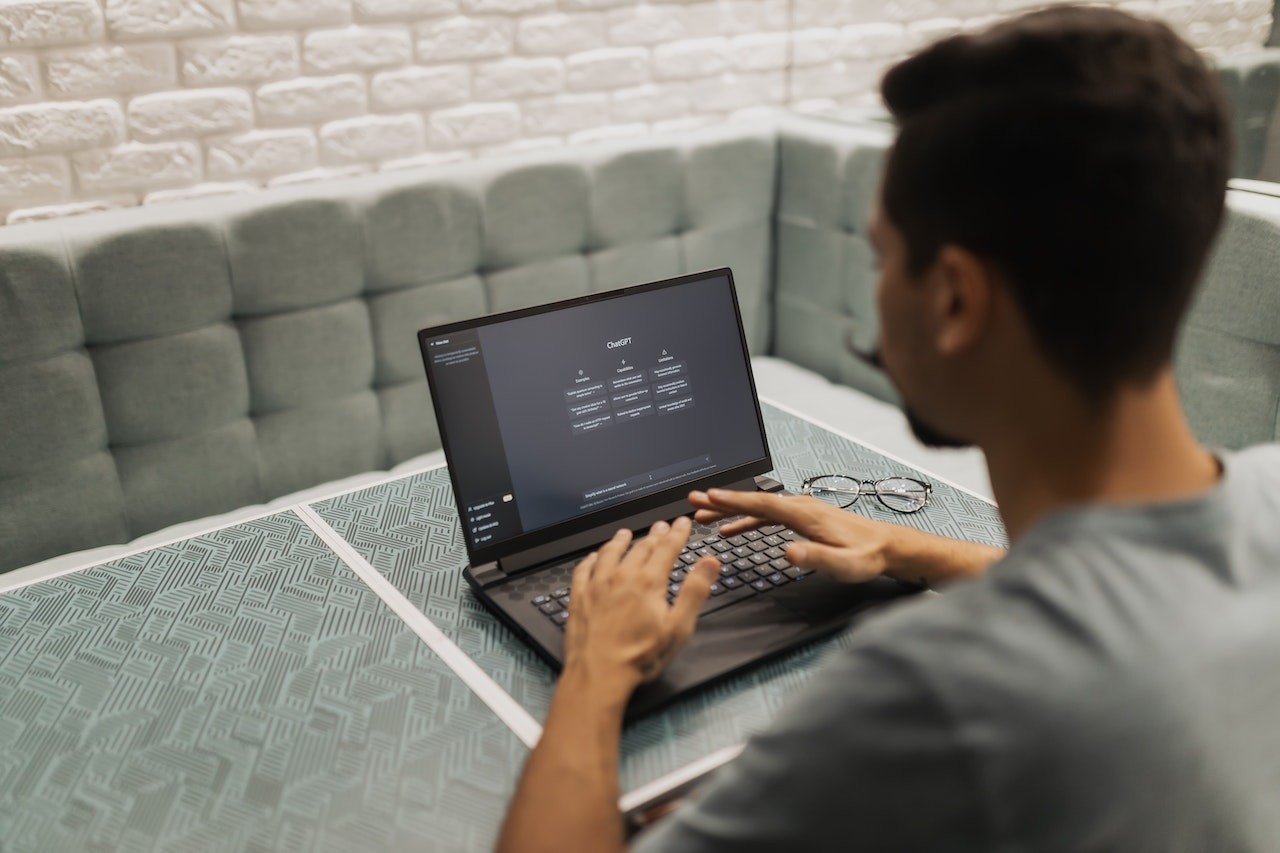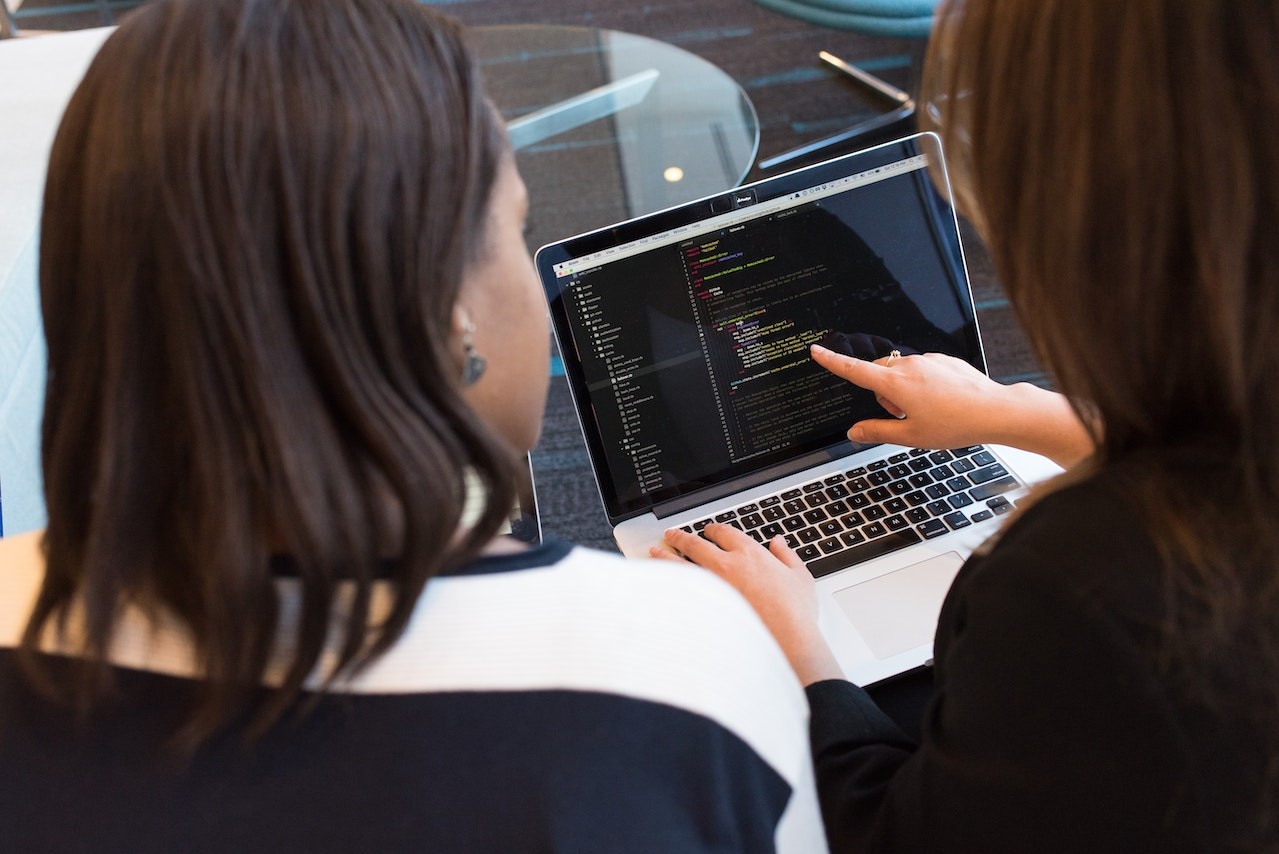Introduction
Imagine a world where AI robots work alongside humans, making tasks easier and boosting the economy. This dream could soon become a reality thanks to the collaboration between OpenAI and Figure.
Even according to McKinsey, AI could contribute a whopping $25.6 trillion to the world's economy. That's a huge number, showing how important this technology could be.
In this blog, we'll talk about how OpenAI, the makers of ChatGPT, is teaming up with Figure, a company building robots. Together, they're working on making robots that look like humans and can do many different tasks.
Let's explore this exciting partnership and see how it could change our lives and work. Get ready to dive into the world of robots and AI!

OpenAI and Figure Deal
In the ever-evolving landscape of AI, collaborations often lead to groundbreaking advancements. One such collaboration that is making waves in robotics is the partnership between OpenAI and Figure.
Figure, a company dedicated to creating humanoid robots with versatile capabilities, has caught the tech world's attention with its ambitious mission. Drawing on expertise from industry leaders like Boston Dynamics and Tesla, Figure aims to redefine robotics' potential by integrating advanced AI technology.
Announcing: Figure raises $675M at $2.6B valuation In addition, OpenAI & Figure signed a collaboration agreement to develop next generation AI models More details below: pic.twitter.com/iVYBrcQTPT
— Figure (@Figure_robot) February 29, 2024
Enter OpenAI, renowned for its contributions to artificial intelligence research. Recognizing Figure's innovative approach to robotics, OpenAI saw an opportunity to collaborate and push the boundaries of what's possible in AI-driven robotics.
This partnership isn't just about combining forces but accelerating progress. With backing from prominent investors like Microsoft, NVIDIA, and Jeff Bezos, Figure recently secured a substantial funding round of $675 million. This capital injection will fuel the development of humanoid robots and expedite their journey from concept to commercialization.
Investments from: - Microsoft - OpenAI Startup Fund - NVIDIA - Jeff Bezos (through Bezos Expeditions) - Parkway Venture Capital - Intel Capital - Align Ventures
— Figure (@Figure_robot) February 29, 2024
The collaboration between OpenAI and Figure is poised to revolutionize robotics by enhancing robots' ability to understand and respond to human language. By leveraging OpenAI's expertise in natural language processing, Figure aims to create robots that can seamlessly interact with humans in various contexts, from industrial settings to everyday tasks.
As Figure and OpenAI embark on this collaborative journey, they're not just building robots but shaping the future of human-robot interaction. With investors' support and the combined expertise of both teams, the possibilities are endless.
Now, let's explore the latest development stemming from this partnership – the emergence of the OpenAI robot, poised to usher in a new era of robotics.
What is OpenAI Robot?
The OpenAI robot, represented by the Figure 01 model, embodies the culmination of advanced AI and robotics technologies. Equipped with cutting-edge capabilities developed through the collaboration between OpenAI and Figure, this humanoid robot showcases a level of sophistication previously unseen in the field.
A pivotal moment arrived with the release of a captivating video demonstration featuring the Figure 01 robot engaging in real-time conversation and executing tasks with remarkable precision.
The video provides a glimpse into the potential of AI-driven robotics, showcasing the OpenAI robot's ability to:
Visual Recognition: The Figure 01 robot demonstrates its prowess in visual recognition by accurately identifying objects in its environment. From a red apple on a plate to dishes on a drying rack, the robot understands its surroundings like human perception.
Task Execution: Beyond mere identification, the OpenAI robot seamlessly transitions from recognition to action. With skill and efficiency, it responds to commands, such as handing over an apple or picking up trash, showcasing its ability to perform tasks autonomously.
Natural Language Interaction: Perhaps most striking is the robot's capacity for natural language interaction. Engaging in dialogue with a human counterpart, the Figure 01 robot communicates conversationally, demonstrating an understanding of spoken words and providing coherent responses.
The events depicted in the video underscore the OpenAI robot's transformative potential in various domains. From assisting in household chores to augmenting industrial workflows, the robot's capabilities hold promise for revolutionizing human-robot interaction.
Furthermore, the absence of teleoperation in the Figure 01 robot distinguishes it from previous iterations. Unlike robots controlled by external operators, the OpenAI robot operates autonomously, underscoring its independence and adaptability in diverse environments.
The OpenAI robot represents a leap forward in integrating AI and robotics, offering a glimpse into a future where AI humanoid robots seamlessly coexist with humans. As developments continue, the journey toward realizing this vision promises to reshape industries and redefine the boundaries of robotics.
How Does the OpenAI Robot Work?
Behind the seamless interactions and impressive capabilities of the OpenAI robot lies a sophisticated technological infrastructure designed to emulate human-like cognition. The Visual Language Model (VLM) is at the heart of this innovation, a revolutionary AI framework developed by collaborating with OpenAI and Figure.
The VLM serves as the neural network backbone of the Figure 01 robot, enabling it to process visual data and comprehend language inputs in real time. Through a combination of advanced machine learning (ML) algorithms and deep neural networks, the VLM equips the robot with the ability to understand spoken commands, recognize objects, and generate coherent responses.
The Figure 01 robot showcases its multitasking prowess during the video demonstration, effortlessly juggling multiple tasks while conversing with a human interlocutor. As it navigates the environment, the robot's onboard cameras capture visual data, which is fed into the VLM for analysis and interpretation.
With OpenAI, Figure 01 can now have full conversations with people -OpenAI models provide high-level visual and language intelligence -Figure neural networks deliver fast, low-level, dexterous robot actions Everything in this video is a neural network: pic.twitter.com/OJzMjCv443
— Figure (@Figure_robot) March 13, 2024
Key components of the Figure 01 robot's functionality include:
Visual Language Model: The robot's integrated cameras capture visual information about its surroundings, including objects, people, and environmental cues. This visual data serves as input for the VLM, enabling the robot to perceive and interact with its environment like human perception.
Natural Language Processing: By collaborating with OpenAI, Figure has integrated advanced natural language processing capabilities into the robot's AI framework. This allows the robot to understand spoken commands, engage in dialogue, and generate contextually relevant responses, enhancing its ability to interact with humans effectively.
Autonomous Decision-Making: Unlike traditional teleoperated robots, the Figure 01 robot operates autonomously. It relies on AI-driven decision-making capabilities to execute tasks and adapt to real-time changing circumstances. This autonomy enables the robot to function independently in various environments without constant human supervision.
The OpenAI robot represents a significant step forward in creating intelligent, autonomous machines by harnessing the power of advanced AI algorithms and state-of-the-art robotics hardware. As Figure continues to refine and optimize its technology in collaboration with OpenAI, the possibilities for future applications of the OpenAI robot are boundless. This offers a tantalizing glimpse into a world where human-robot collaboration is seamlessly integrated into everyday life.
The Future
As we conclude our exploration of the OpenAI robot, we find ourselves at the threshold of a transformative era in human-robot interaction. The collaboration between Figure and OpenAI promises remarkable advancements in technology, but it also raises important questions about the implications of integrating intelligent robots into our lives.
On one hand, the Figure 01 robot's ability to understand and respond to human language opens doors to new possibilities. It could revolutionize industries, improve efficiency, and even enhance our daily lives. But on the other hand, the prospect of humanoid robots becoming increasingly autonomous brings a sense of unease.
The video demonstration showcasing the Figure 01 robot's capabilities leaves us in awe of its talent and intelligence. Yet, there's a nagging feeling of apprehension as we contemplate a future where robots play increasingly prominent roles in society. Will they replace human jobs? Will they outsmart us? These are questions that linger in the back of our minds.
Moreover, the Figure 01 robot's lack of teleoperation raises concerns about its autonomy. While it's impressive to see a robot operate independently, it also begs the question: How much control do we have over these machines? What safeguards are in place to prevent unintended consequences?
Final Words
As we navigate this uncertain terrain, we must approach the integration of AI-driven robotics with caution and foresight. While the potential benefits are undeniable, we must consider ethical and societal implications. It is crucial to balance innovation with responsibility as we move forward.
In the end, the OpenAI robot represents a pivotal moment in the evolution of human-robot interaction. It's a testament to our ingenuity and ambition as a species. But it also reminds us that with great power comes great responsibility. How we choose to wield this power will ultimately shape humanity's future.
FAQs
Ethical considerations of increasingly autonomous robots include the need to balance innovation with responsibility and the importance of having safeguards in place to prevent unintended consequences.
The potential applications of AI robots include: Assisting in household chores, augmenting industrial workflows, and revolutionizing human-robot interaction.
The collaboration between OpenAI and Figure aims to develop next-generation autonomous humanoid robots that look like humans and can perform many different tasks.



